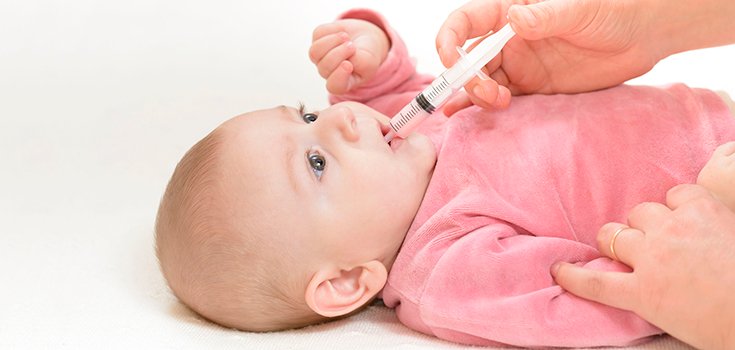Study: 80% of Parents Giving Kids too Much/too Little Liquid Medications

A new study published September 12 in the journal Pediatrics shows that many parents accidentally overdose their children on liquid medicines, but standardizing measuring instruments and labels may reduce these errors. [1]
Dr. Shonna Yin, an associate professor at NYU Medical School and a co-author of the study, said:
“When parents used dosing cups, they had four times the odds of making a dosing error, compared to when they used an oral syringe.” [2]
Yin and her colleagues wrote:
“A range of measurement units (eg, milliliter, teaspoon, tablespoon), along with their associated abbreviations, are used as part of instructions on labels and dosing tools, contributing to confusion and multifold errors.”
Yin went on:
“Similar to what other studies have found, our study found that parents with lower health literacy are at greater risk for making dosing errors.”
According to the researcher, language was found to be a hurdle for non-English speaking parents. Furthermore, murky dosing instructions also proved to be a problem – for example, when the directions call for a teaspoon of medication, yet the provided tool shows units in milliliters. A simple syringe could fix all of that.
The Study
The new research – the 1st phase of the Safe Rx for Kids study – is funded by the National Institutes of Health (NIH). The study involves more than 2,000 English- or Spanish-speaking parents who brought a child to an urban clinic participating in the current study. [1]
For the study, Yin and her team of researchers asked the parents to measure 3 different medication amounts (2.5, 5, and 7.5 milliliters) using 3 different measuring tools designed for liquid medication – a 10-mL syringe with 0.2 mL or 0.5 mL increment markings or a measuring 30 mL dosing cup.
Participants were divided into 5 groups that varied based on the measurement units and used on the measuring tool and instructions.
The 1st group measured medication using mL for both.
In 1 group, mL was used for both. But in the other groups, the units or abbreviations for units used on the measuring tool and instructions did not match, or the measuring tool or instructions included units in milliliters and teaspoons.
The researchers found that parents who were given measuring tools with mL and teaspoon markings combined with teaspoon-only labels made far more measuring errors than those who received milliliter-only labels and tools.
Yet, even in the milliliter-only group, parents still made dosing errors about 25% of the time.
The team found that:
- 84.4% of parents made 1 or more dosing errors. Regardless of the level of health literacy or language spoken, more errors were seen with cups than syringes, especially when it came to smaller doses. [2]
- 68% of study participants poured too much, rather than too little medicine.
- Parents poured the wrong amount of medicine 43% of the time when using a dosing cup, compared to 16% of the time when using an oral syringe. [3]
How to Avoid Dosing Errors
This method lets parents double-check the dose, and also prevents a syringe from introducing bacteria into the bottle.
It may also help to draw a line or apply a piece of tape the syringe around the amount they need to give their child.
Hammond added that parents should ask their doctor to use their child’s weight to calculate the proper dose of common over-the-counter (OTC) medications, such as Tylenol, Motrin, and Benadryl. Oral syringes should also be used to administer them.
And if you grew up taking medicine from a kitchen spoon, the practice should end with you. Silverware varies greatly in size and shape, so caregivers shouldn’t rely on them to provide an accurate measurement.
Sources:
[1] Healthline
[2] CNN
[3] HealthDay
